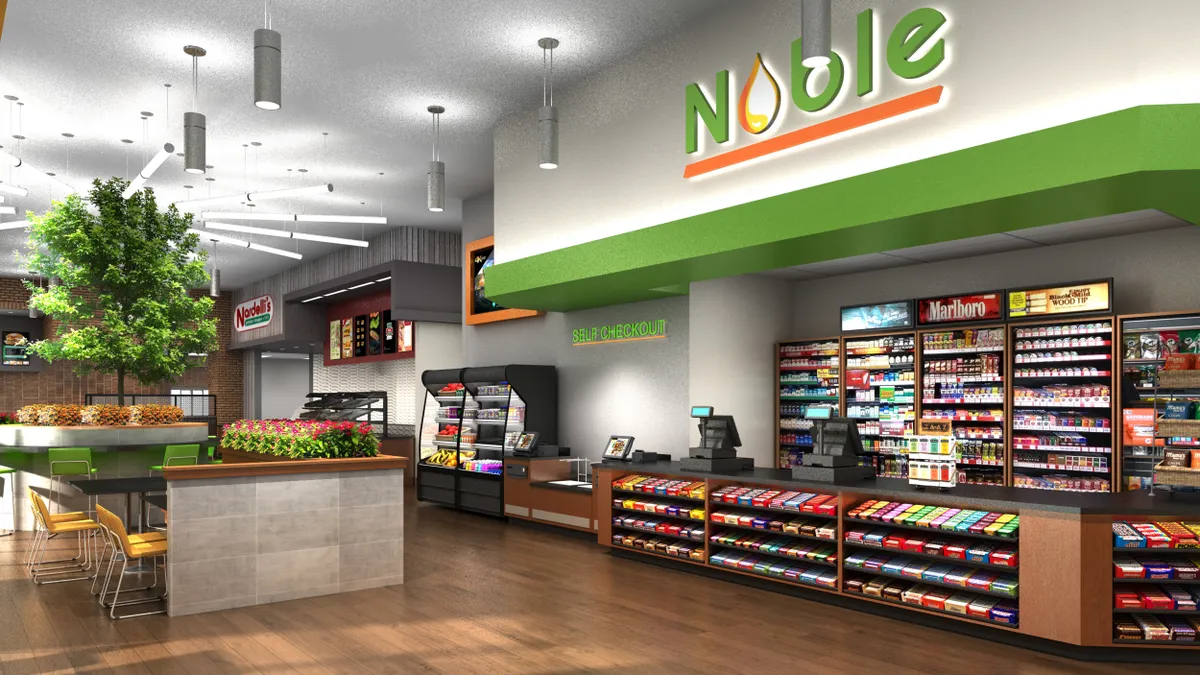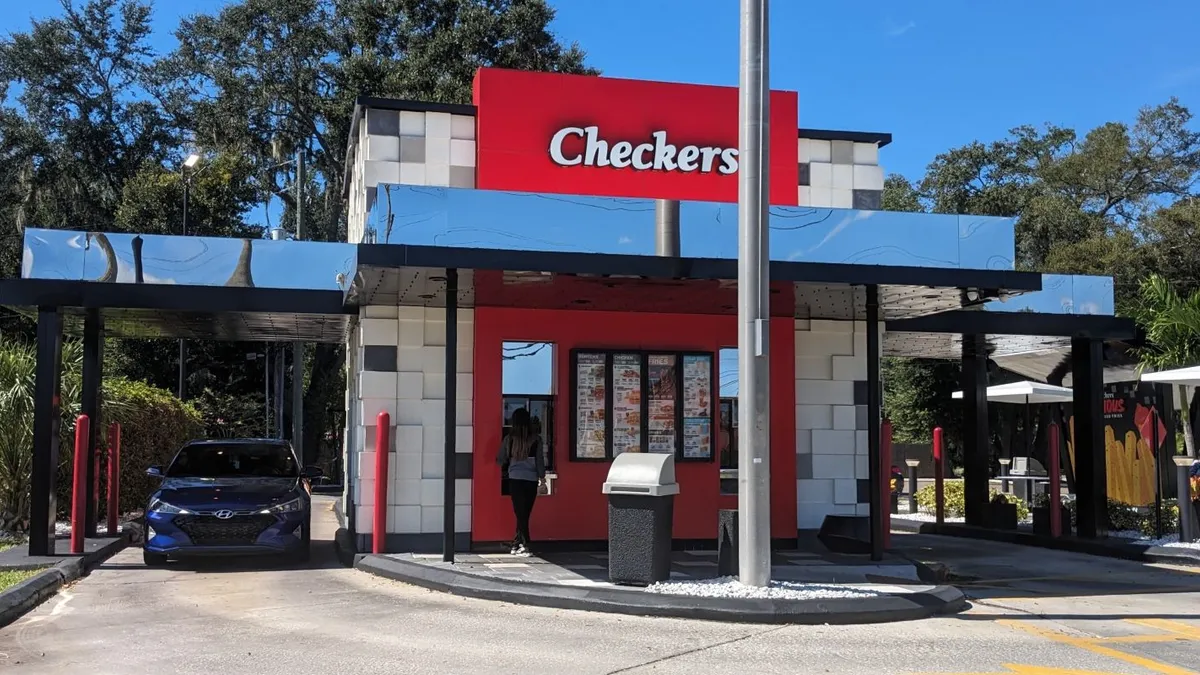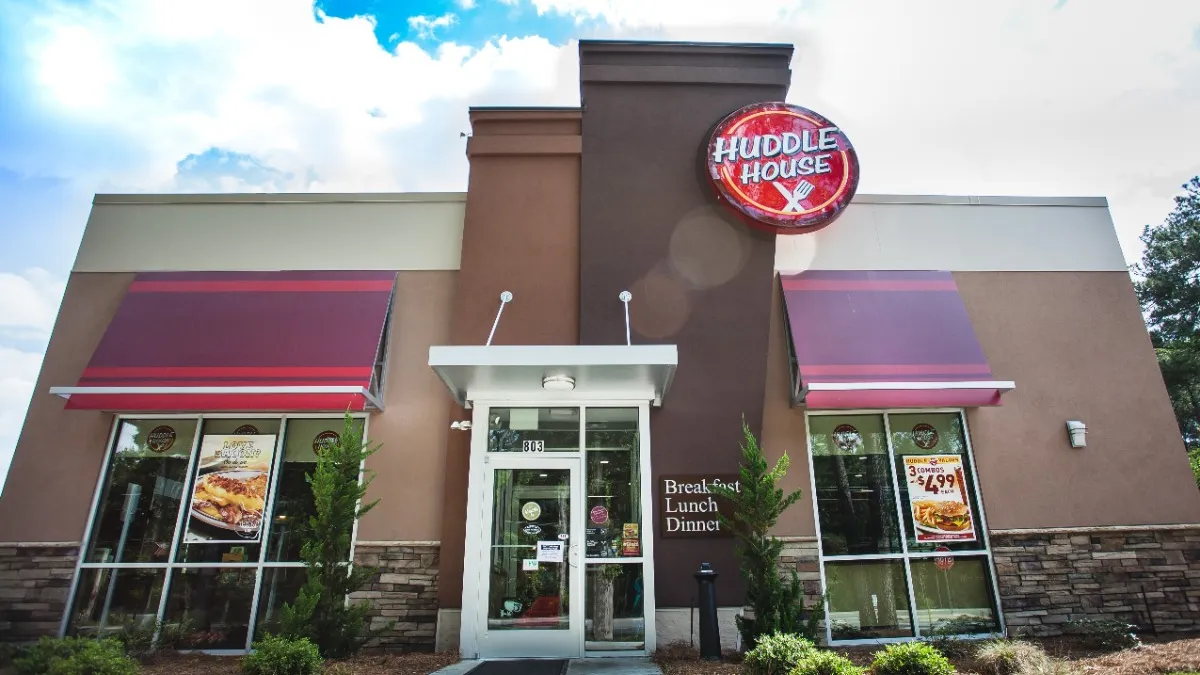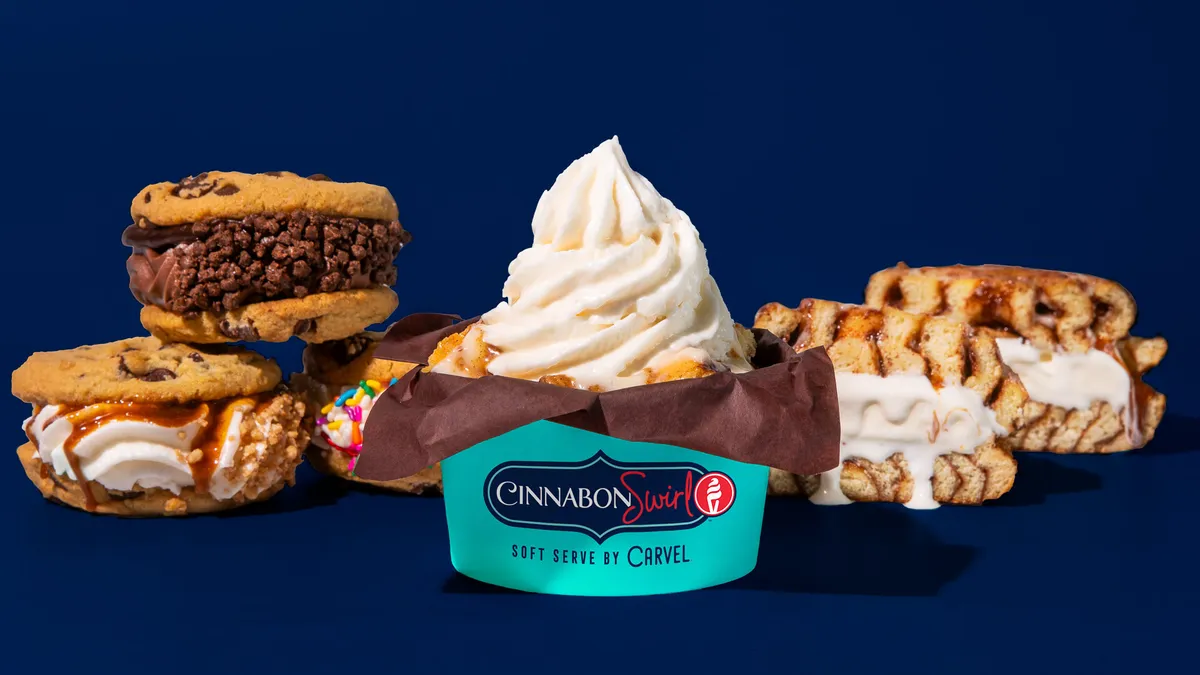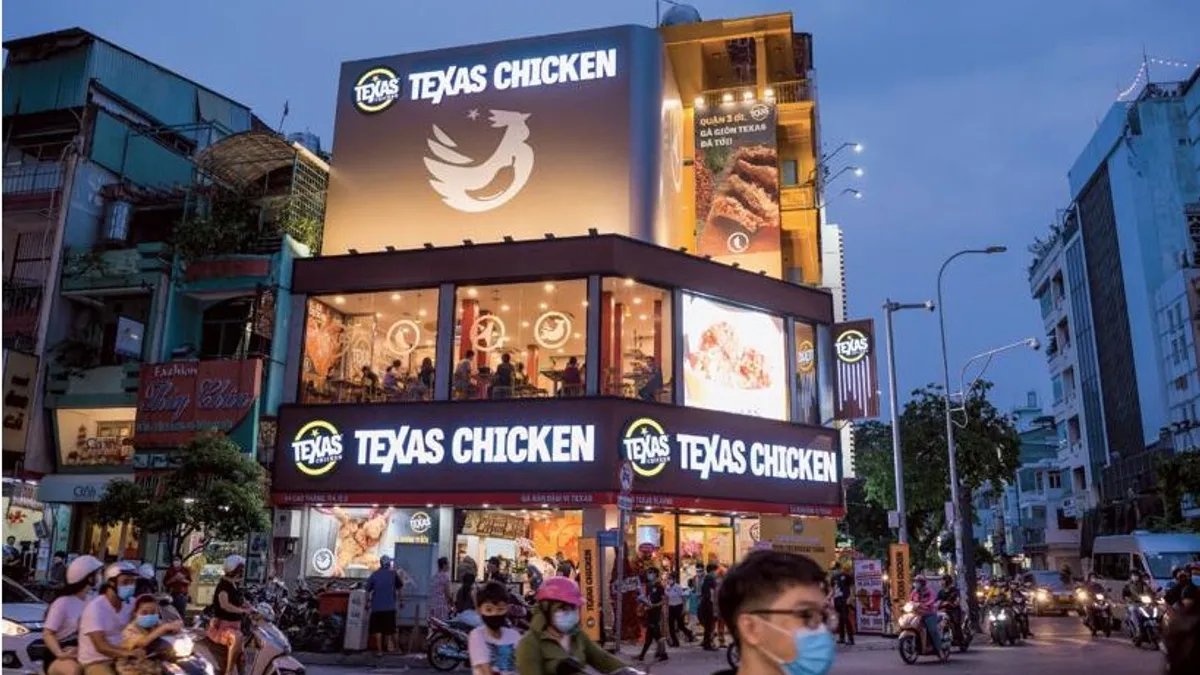This article is the first in a four-part series exploring the boom in restaurant franchising over the past 22 months. Next week, Restaurant Dive will look at why franchisees are flocking to fast casual chains. Future articles will be posted here.
Much of the dust of the COVID-19 crisis has settled in the restaurant industry, revealing a market landscape that looks markedly different from the segment's status quo in 2019. One of the biggest changes? Franchise expansion opportunity, experts say.
"I think anytime you have a crisis, you have an opportunity," Mario Herman, a franchise litigation attorney based in Washington, D.C., said. "The theory of creative destruction applies here. ... [There is] opportunity to take over an existing business that is failing because of COVID, and if you have the resources and capacity to be able to withstand this it's a great opportunity to come in and start buying these things up."
The staggering amount of restaurants lost to pandemic conditions — Datassential reported this spring that 10% of U.S. eateries had closed — has left behind a bounty of second-generation real estate. These empty restaurant spaces already have kitchen buildouts, dining rooms and sometimes drive-thrus, lowering startup costs and allowing franchisors to quickly scale their U.S. footprints.
"There's always going to be a group of franchisees that sit back and kind of circle the wagons and wait to see what's gonna happen. And then there's another group that just takes a leap of faith and gets aggressive during difficult times. They're well capitalized, they have an infrastructure in place, they have a need, especially right now, to simplify. So I think that's why you're seeing a lot of [franchise] deals happening," Paul Tripodes, vice president of franchise development at Aloha Poke, said.
Landlords are also more accommodating, Herman said, because they are scrambling to fill empty storefronts.
"In a lot of the real estate deals out there, the landlords are desperate to get people into spaces, not just commercial spaces and office spaces but also retail restaurant and other small franchise-type opportunities because a lot of people are failing and there are so [many businesses] going online," he said.
Another change? The South has arguably become the hottest market for restaurant franchise deals. Operators are snapping up properties below the Mason-Dixon line in droves, betting that mild weather, relaxed COVID-19 restrictions and suburban sprawl will help insulate business from future pandemic disruption.
"[In] Texas, South Carolina, North Carolina and Florida, it's businesses as usual," Tripodes said.
Booming populations in Southern states are also a draw, Tripodes added.
"I think people are just tired of expensive cities with high taxes and cold weather, where it's difficult to do business," he said. "I live in Charlotte, and ... a hundred people are moving here a day. Cities in the South [and] Southeast have lower taxes and [are] business-friendly."
Restaurant franchise expansion from Jan. 2020 to Oct. 15, 2021
Restaurant Dive tracked restaurant franchise expansion announcements made in 2020 and 2021 to get a sense of which states were most attractive to franchisees and what brands and restaurant categories were experiencing the most proliferation.
You can explore our findings in the interactive heat map above, which shows how many units are coming to each state, as well as which units are part of signed deals and which are part of unsigned franchisor expansion targets.
While Texas and Florida snagged the most franchise expansion by far, reflecting the assessments of experts, California boasted the third most units at 153 locations, despite the red tape that comes with the territory.
"There's a wide swath of the Southeast without a lot of regulatory state laws, so it's easy to prepare your documents and jump right in [to franchising]," said Susan Grueneberg, a partner with Cozen O'Connor in its franchise practice. "If you're in the Northeast ... and definitely out here in California, you're going to have to go through an application and registration process before you could start offering franchises."
Many franchised units are coming to Northeastern and Midwestern states as well despite harsher winters that undermine outdoor dining opportunity. This signals that even though franchise strategy has shifted in response to pandemic-era dining behavior and real estate opportunity, franchisors haven't abandoned pre-pandemic growth schemes.
A question remains, though: How long will this surge in franchise expansion last? Experts agree the current growth rate surpasses or at least matches pre-pandemic growth, but estimating when this deal-making will wane is challenging, especially given the continued ebb and flow of COVID-19 cases.
Restaurant business is looking more dismal, as well. More than 50% of restaurant operators surveyed by the National Restaurant Association say business conditions are worse now than three months ago, and 40% believe it will take over a year before they see normal business conditions.
Herman posits the current flurry of franchised unit launches won't wane until a year or two from now, but warns that restaurants should be careful not to overstretch their footprints.
"People have to be careful of too much expansion, because they don't know exactly whether there will be sufficient demand, especially now going into winter," Herman said.








